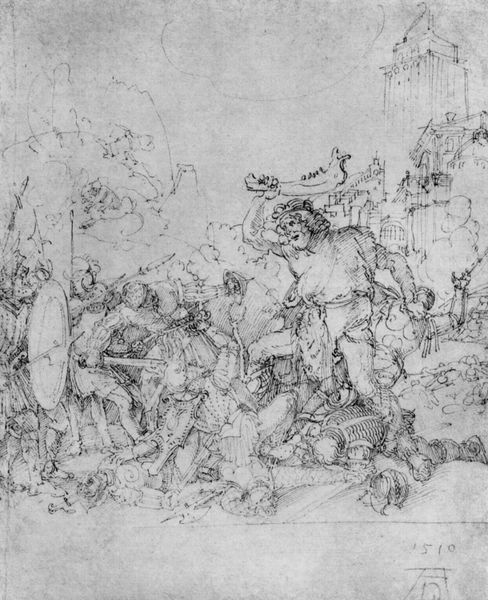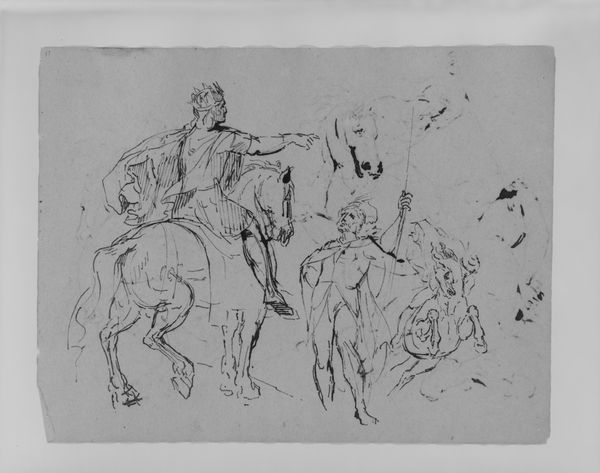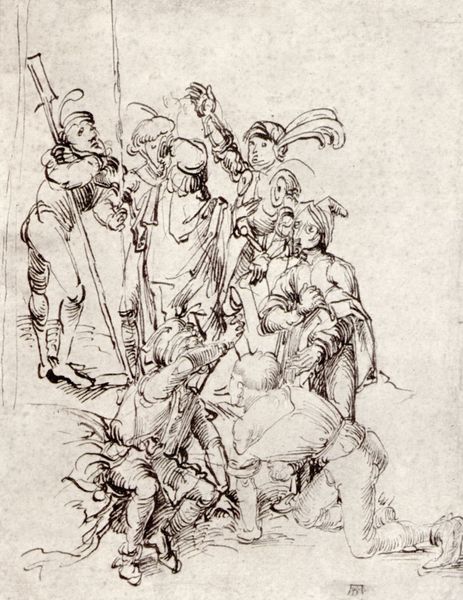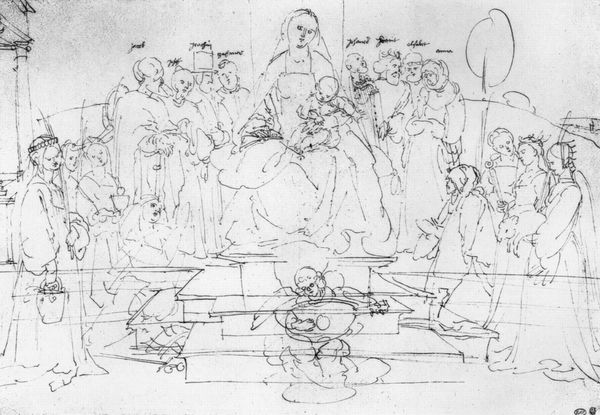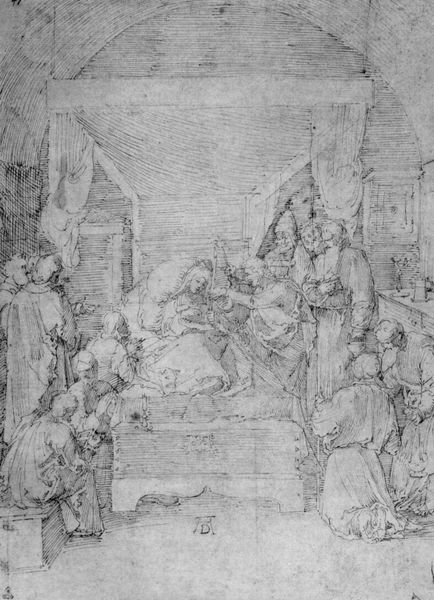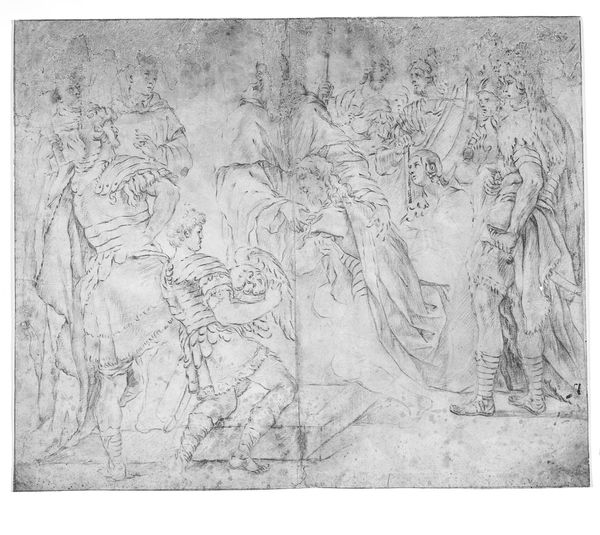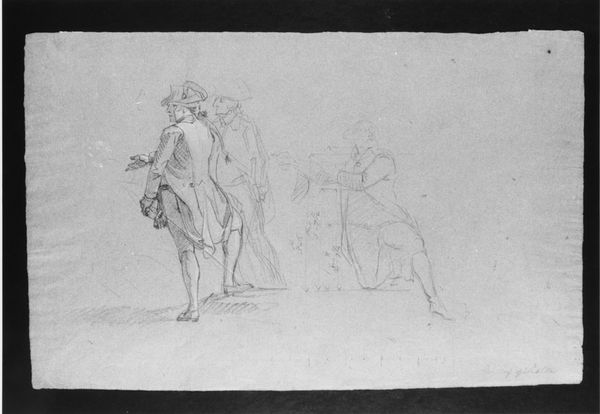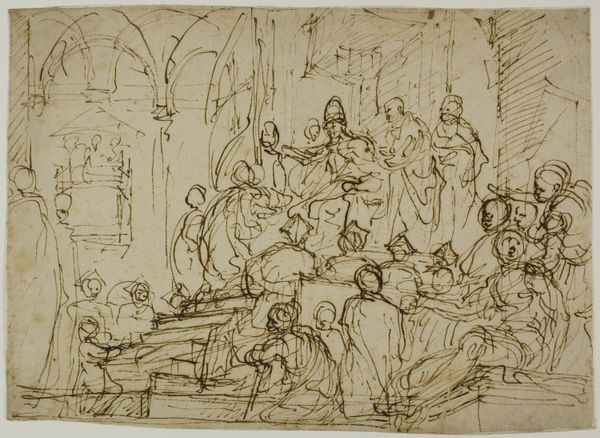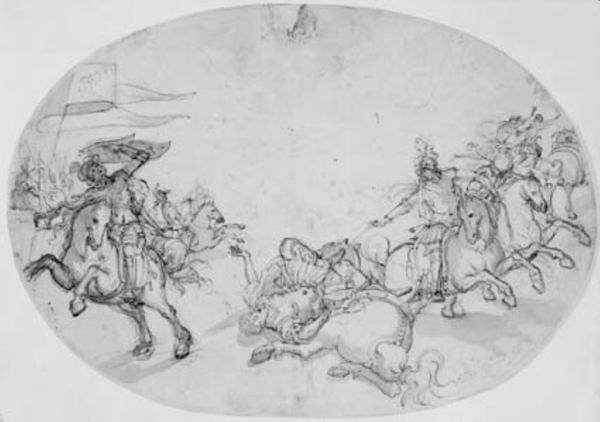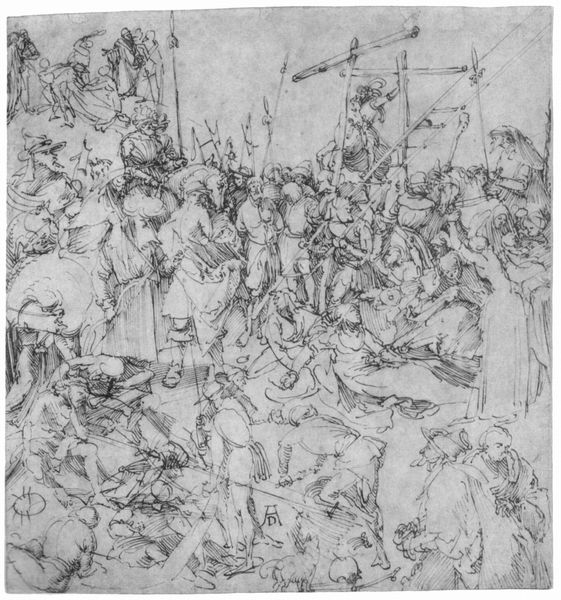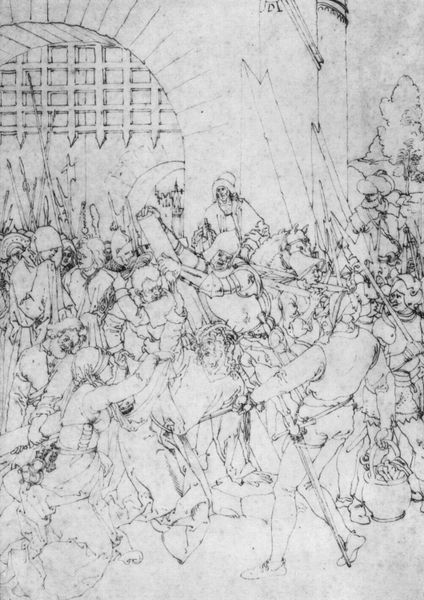
drawing, pen
#
drawing
#
baroque
#
landscape
#
figuration
#
pen
#
history-painting
Dimensions: 194 mm (height) x 278 mm (width) (bladmaal)
Curator: Ah, Pandolfo Reschi’s “Scene after a Cavalry Battle.” It’s currently held here at the SMK, estimated to be made between 1640 and 1696. It's rendered in pen and ink on paper. Editor: There’s a frenzy to it, a quick sketch capturing such raw chaos. It feels almost...breathless. Like a momentary pause in some violent, drawn-out struggle. Curator: Reschi was a master of imbuing landscapes with dramatic historical narratives. It seems to teeter between history painting and pure figuration. Consider how those frantic lines conjure up the brutal immediacy of war. I mean, the artist must've seen scenes like this, the grim reality rendered through that frantic penmanship. Editor: Right, pen and ink wasn't merely a medium. It was a method, efficient for quickly documenting what he experienced on the field. Look how the ink weight shifts to articulate depth or highlight dramatic points of impact. It's all about the labor – seeing and marking. Not a idealized interpretation, rather this swift, utilitarian translation of sensory experience. The pen was as much a weapon of record as the swords on display here. Curator: Perhaps it's a tad reductive. I mean, yes, the context and the means absolutely dictate how a work resonates, but for me, it goes beyond a mere document. You see those figures in their state of duress, some still upright on their steads but others collapsing and fallen? One almost senses a universal reckoning with mortality. A visual elegy... Editor: Elegies require a stillness; that isn't to be found here. Look, I’m thinking about the accessibility, the consumption of conflict. Pen and ink drawings could circulate more easily than oil paintings. It invites an unsettling perspective: how Reschi’s work could inadvertently transform this horrifying 'scene after' into consumable news for audiences. How can a mere drawing communicate war and suffering in such a shallow sense. Curator: That stings! It’s such an austere drawing, the stark absence of color actually amplifies the brutality of the event, if that’s even possible. Ultimately I do think there's much sensitivity here. It prompts us to consider not just who triumphs or suffers in war, but what remnants are inevitably left behind. Editor: You've painted a rather melancholic, thought-provoking finale to that debate! And I now share the understanding for these potent little strokes. Perhaps such rapid execution also speaks of humanity's inherent resilience—our ability to continue producing even in the wake of extreme upheaval, whether to critique, analyze, or mourn.
Comments
No comments
Be the first to comment and join the conversation on the ultimate creative platform.
